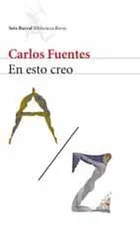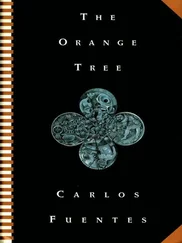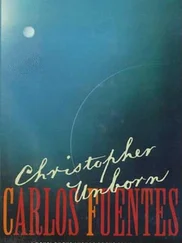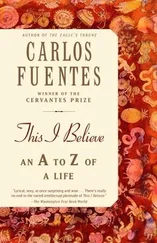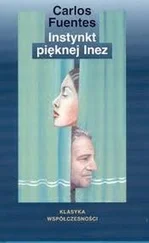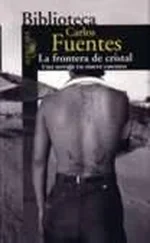In a different but no less radical (because it is so ancient) way, the West is at issue in Latin America. The West took the continent by conquest, and its legitimacy has never been sure. Even if Latin America’s culture is Western, it belongs to the Third World as well and shares all its anti-Western reflexes. Latin America, as Fuentes says, is a façade and one always wonders what is hidden behind it.
Western historical time interrupted Indian time in Latin America. Gabriel García Márquez’s village of Macondo in One Hundred Years of Solitude keeps its pathetic solitude — the solitude of a world outside history.
But the world deserted by history can avenge itself and one day could banish history to its own exile. History, abandoned, alone, will be forgotten in a world which would have got rid of the Western mirage of “historic time.” Fuentes sees history in that solitude; he sees it as if it were already finished; he dreams of it as one dreams of the dead.
Be that as it may, in Central Europe and in Latin America, the novel puts history in question in a way not seen until now.
6
The novel speaks of a world without a future, but the world prefers to debate the future of the novel.
In a long interview on American TV, Fuentes said: “Outside of scientific knowledge, logic, and politics, there is the knowledge of the imagination. There are many things which neither historiography nor logic nor science can discern. There are things which only a Dostoevsky sees.”
Still, in the last few decades, one has the impression that the romanesque procedures of literature have exhausted themselves and that “a Dostoevsky” has nothing to see or to say.
This impression sometimes engenders a radical reaction. One sees only one way of avoiding the shame of eclecticism: the total renunciation of the conventions of the novel. One begins to distinguish on one side the traditional novel (whose time is past) and on the other the modern novel (which is not conceived as a new phase of literature’s evolution but as confrontation, rupture, and negation).
This renunciation also concerns that which was the basis of the romanesque — the character (an imaginary being not identical to the author), about whom everything has now been said. All of a sudden, the notion of the character is itself exhausted, used up. In the 1920s, Proust and Joyce explored the whole universe of the human soul; they touched its limit. Following this logic, it is easy to think that Kafka, during the same period, in depriving K. of his visible face, of his past, even of his name, effected a kind of definitive decapitation of the romanesque character as such.
Still, it seems to me that the development of the novel is not over yet and that what appears to be an end is nothing but a change of direction. The camera of romanesque knowledge turns slowly toward other horizons. I don’t think Kafka decapitated the character: he was only interested in other aspects of man and he had another idea of what was essential for human life.
K. does not enchant us by the universe of his soul; if his soul is a universe, then it is besieged, dried out, absorbed by another universe — the world that surrounds it and toward which its possibilities of action are tragically limited. By virtue of this new human condition (as Kafka conceived of it), the physical face, the character’s past, his name, etc., lose all interest.
But one must never forget: what is basic (with Kafka as with all great novelists) is discovery (of the unknown aspects of human life and of the new possibilities of the novel). Renunciation (of old conventions) is nothing more than a consequence — inevitable, perhaps, but secondary.
Paradox: renunciation is immediately visible; it is thus an easily perceived sign of modernity. In contrast, what is new, what constitutes a discovery, is much harder to discern.
The reader’s eye is accustomed to conventions: the renunciation of convention is thus picked out instantly. In contrast, the discovery of the new holds itself outside all conventions. The conventional spirit cannot register it. For a conventional person, Doctor Faustus is just a conventional novel.
That is why minor works which noisily assert their rejection of conventions without bringing us anything new are often preferred to works which, without proclaiming their renunciation, discover and reveal.
7
Among these, The Sleepwalkers of Hermann Broch is the book I admire ceaselessly. It contains the germ of all the possibilities of the post-Proustian novel.
Broch’s greatest performance in The Sleepwalkers is probably the character of Esch (this portrait says more about the man of our century and about the irrational forces that guide his conduct than any other book). Esch appears in the novel at the age of thirty; we do not know and never will what he was up to until then. His past remains absent, just like K.’s in The Trial.
And if the past is absent, so is “psychology,” at least in the sense that writers before Broch (and his generation) understood it: the search for psychological causality, the quest for hidden motivations in the depths of biography. Despite this “renunciation” (that is, the renouncing of those novelistic procedures dubbed psychological), Esch is completely “alive” for us. Broch explains his character’s attitudes by minute descriptions (which are, however, phenomenological, not psychological).
During one of his descriptions, Broch develops the comparison between the criminal and the rebel. He writes: “Esch was a rebel. He was a rebel the way Luther was.”
Instead of informing us about Esch’s childhood and youth, Broch tells us Esch was like Luther. His character’s individual past is unimportant. Esch’s attitude can be traced beyond his life. Esch’s past is Luther.
The novelty of Broch’s conception of character is discrete (although it is consistent: Passenow, another character in The Sleepwalkers, is linked to St. Augustine, to Seneca, to Zeno, and to Pythagoras). It is nonetheless clear: a character is no longer conceived as an inimitable uniqueness but rather as a locus of continuity, as a window which gives out on man’s distant past.
That which we call psychological analysis in the art of the novel has not been the exclusive property of a Richardson or a Stendhal. It was one of the secular tasks of the novel in an era fascinated by the discovery of the individual, of his irreplaceable non-interchangeable nature.
The principle Esch is like Luther is not Broch’s property. It is the general orientation of the novel in a century in which “the tension of historic time” seems close to its paroxysm and in which man looks backward to summarize the history of his civilization.
8
The principle Esch is like Luther is transformed in the aesthetic of Terra Nostra as the principle Esch is Luther.
If the principle Esch is like Luther is not Broch’s exclusive property, the principle Esch is Luther belongs only to Fuentes. It cannot be imitated except at the risk of turning into pastiche.
Toward the end of Terra Nostra, Fuentes shows us the key to his method: “A life is not sufficient. Several existences are needed to make up a person.” And he follows with a Cabalistic allusion: “Each child born at each instant reincarnates each person who dies at each instant.” And: “It is not possible for us to know who we are reincarnating, because there exists no witness capable of recognizing in me the person I was.”
The ancient mythology of reincarnation is materialized in a romanesque technique. Terra Nostra is an immense dream in which history is performed by endlessly reincarnated characters who say to us: it is always us, we are the same who go on playing the game of history. Historical continuity resides not only in the causal linkage of events but also in the identities of the actors.
Читать дальше


